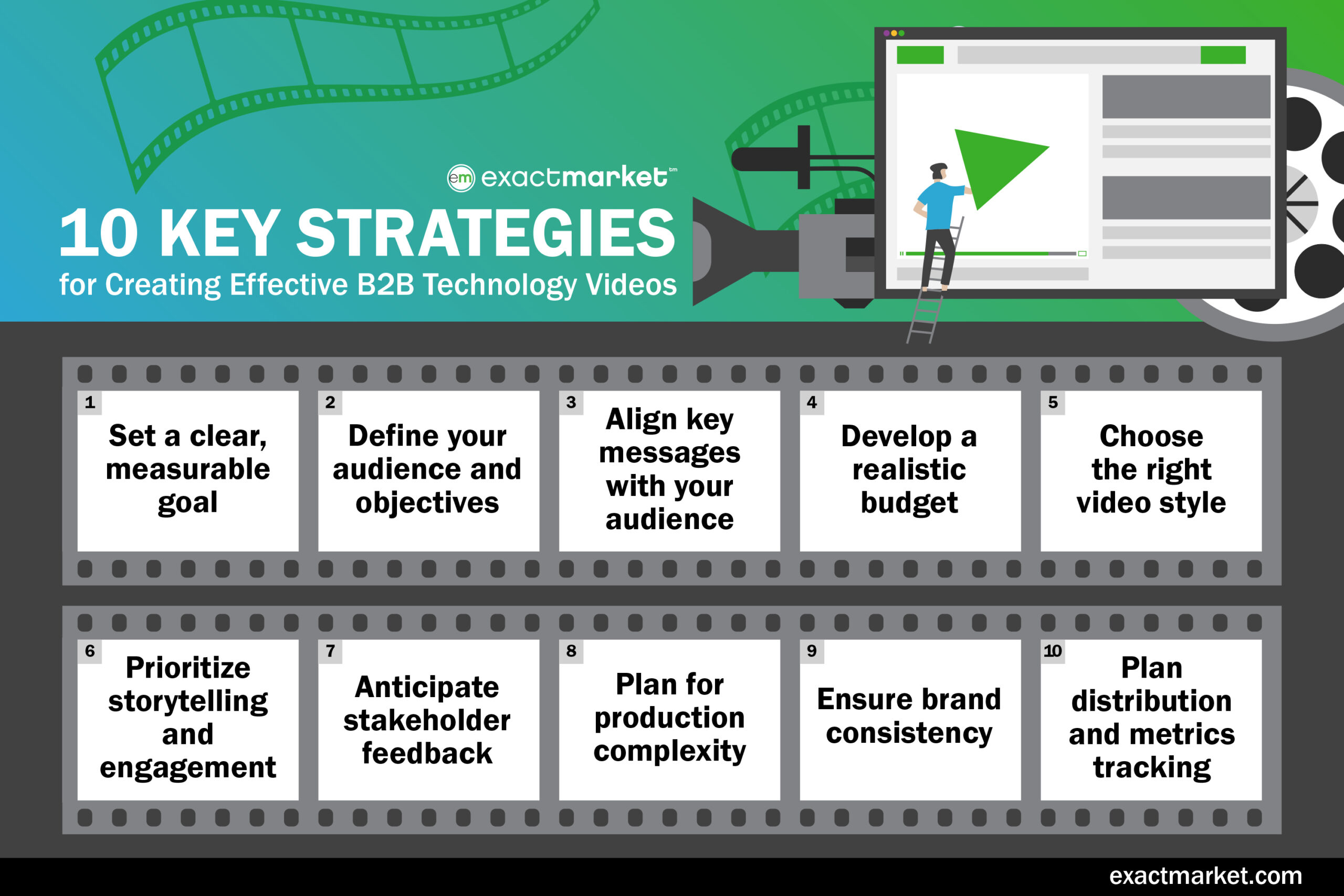Creating a compelling video for your B2B technology audience can transform how your brand connects with customers, communicates value, and stands out in a competitive market. With the right planning and a touch of creativity, a well-crafted video boosts engagement and makes complex technology topics more accessible. However, marketing and sales teams often struggle to translate new or technical concepts into visual content that truly breaks through and drives action.
Here are ten ideas to help you create impactful B2B technology videos—adapt and prioritize them based on your project’s unique requirements.
1. Set a Clear, Measurable Goal
Establishing goals for the project is critical. Benchmarks like engagement rates, lead conversions, or watch time help assess the video’s performance and guide content creation to ensure your message resonates. Clear goals also shape your distribution plan, pinpointing the right platforms and timing to maximize views. Reviewing metrics regularly lets you refine future efforts for continuous improvement.
2. Define Your Audience and Objectives
Launching a video project without a defined target audience is like speaking into the void. Identify whether you’re addressing CTOs, sales teams, or technical users, and tailor your messaging to their needs. Set a clear objective—building brand awareness, generating leads, or educating customers. All this shapes your video’s tone, messaging, and overall strategy for maximum relevance.
3. Align Key Messages with Your Audience
Tailor your video content to address your audience’s specific challenges and priorities. Use relatable language to avoid overwhelming viewers with jargon and demonstrate how your product or solution delivers tangible benefits. Incorporating customer success stories or examples builds credibility and fosters trust, inspiring viewers to see your value as a partner.
4. Develop a Realistic Budget
Creating a budget is essential for a successful video project. Consider all potential costs, including scripting, talent, travel, production, and post-production. Your budget directly impacts the video’s quality, so prioritize key elements that align with your goals while maintaining brand standards. Thoughtful financial planning helps balance creativity with budget constraints, ensuring a polished, high-quality result that meets your objectives.
5. Choose the Right Video Style
Choosing the right video style is essential to achieving your goals. Options like explainer videos, product demos, customer testimonials, or case studies serve different purposes. Animated videos simplify complex topics, while live-action videos build personal connections. For example, a customer testimonial can establish trust, while an explainer video is ideal for breaking down intricate concepts.
6. Prioritize Storytelling and Engagement
Great narratives transform video into an impactful brand voice, making technical content relatable and engaging. You create a connection that resonates with viewers by weaving stories with real-world applications. This approach bridges the gap between information and impact, encouraging audiences to see how your solution benefits their organization.
7. Anticipate Stakeholder Feedback
Early collaboration with key stakeholders, such as marketing and sales teams, ensures alignment on messaging and goals. Involving them from the start minimizes last-minute changes and fosters project ownership. Proactively managing feedback streamlines the process and leads to a final product that satisfies all perspectives.
8. Plan for Production Complexity
B2B tech videos often require detailed production planning, especially for live-action or animation. Whether it’s coordinating schedules for a live shoot or designing technical visualizations, staying agile and prepared ensures a seamless process. Planning for production complexities upfront results in a polished video that meets your expectations.
9. Ensure Brand Consistency
Reinforce brand identity with consistent visuals, colors, and messaging. Every detail, from logos to design elements, should reflect your brand’s personality and values. This cohesiveness builds trust and familiarity, making your video memorable and professional while strengthening audience loyalty.
10. Plan Distribution and Metrics Tracking
A strategic distribution plan ensures your video reaches the right audience. Tailor your social media, email, or website approach, and set clear metrics such as engagement rates or conversions to track success. Analyzing this data refines your strategy, maximizing the impact of your video.
Producing Impact: B2B Tech Videos That Drive Results
By focusing on clear objectives, storytelling, and strategic planning, you can create B2B tech videos that resonate with audiences, build credibility, and deliver meaningful engagement. Each detail, from format to distribution, plays a role in crafting a video that drives results and elevates your brand.

